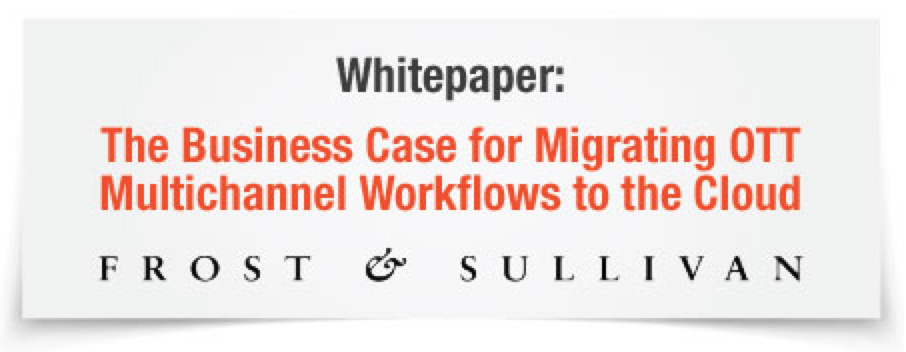New Findings Show Cloud Solutions Deliver an Outstanding Price-Performance Value Proposition
 We all know that video volume is skyrocketing, millenials are far more likely to watch video on their devices than on their primary screens, and end users are only a mouse click away from an alternative content source should your service fail to delight. Online video offerings are no longer an option for content companies – users demand their content when they want it, where they want it, and services must provide this or risk subscriber flight. However, other factors related to online video are less understood.
We all know that video volume is skyrocketing, millenials are far more likely to watch video on their devices than on their primary screens, and end users are only a mouse click away from an alternative content source should your service fail to delight. Online video offerings are no longer an option for content companies – users demand their content when they want it, where they want it, and services must provide this or risk subscriber flight. However, other factors related to online video are less understood.
One of those factors is how complex online streaming is, and how quickly its parameters can change. For example, the relative volume of video consumed on portable devices such as smart phones and tablets has more than quadrupled over the last two years – the absolute value has risen by more than 500X in two years. In terms of streaming formats, Flash once dominated the scene but today is a nearly archaic format – presently HLS and HDS playing key roles, with Silverlight fading and HTML5 right around the corner. Where HD was a challenge as recently as a few years ago, today 4K is the new differentiator. The other factor is the speed with which new services must be taken online – in today’s experimental environment, services need to go live in days, but companies often spend weeks if not months procuring and deploying equipment.
This constant disruption of technical workflows, coupled with the need for agility, creates difficult challenges for content companies to grapple with. Soaring volumes, fluctuating requirements and elusive monetization are a tough combination to handle in a financially sustainable manner. Cloud-based online workflow solutions can go a long way in mitigating these challenges. Since vendors of online video services specialize in this specific business, they can devote much higher levels of resources towards optimizing their online video workflows, stay closely in tune with changing requirements and latest innovations, and can amortize the costs of innovation and scale across a number of customers. As a result, content owners can reap the benefits of rapid time to market with new online products, near-zero CAPEX and comparable OPEX when all factors related to the total cost of ownership are considered. Having realized that many content companies underestimate the true cost of on-premises workflows and are unduly wary of the usage-based pricing models typical of the cloud, Frost & Sullivan worked on a white paper in partnership with iStreamPlanet to quantify and compare the actual costs of on premises and cloud-based workflows. You can download and see the results of the study in the paper here.
One surprising finding was that the economics work out not only in use cases related to capacity spikes – such as short-term coverage of sports tournaments or elections, or sudden events that result in viral video consumption – but also in the case of 24×7 linear live channels. In other words, even if a content company had adequate space in their data center to host transcoding and streaming equipment for a full range of 100-200 content channels (which, it turns out, most companies actually do not have), it is more cost efficient to host that workflow in the cloud. The case is even more compelling for small and medium-sized content companies whose viewership is small enough or content volume is small enough that the overhead of on-premises installation would be very difficult to recoup from uncertain online revenues. Another surprising finding is that cloud-based solutions can pay for themselves simply in terms of minimizing opportunity cost associated with the long delays that on-premises deployment inevitably incurs.
All this aside, not all cloud implementations are created equal. When choosing a cloud partner, it’s important to ensure that the solution has been architected from the ground up to be optimized for the cloud and to handle the fluid nature of its underlying computational resources. Broadcast quality SLAs and excellent quality of experience remain must-have features for competitive services, and this can only be achieved when your vendor provides robust industrial-grade solutions. Fortunately for the industry, the maturity of available solutions is growing even as costs continue to fall, making the business case for moving online video workflows to the cloud increasingly stronger. You can download the whitepaper for free here.
